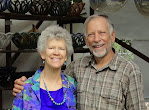Chuspa, Quechua word for Coca Purse,
the fabric bag traditionally carried by Taquile men for the sacred and medicinal coca leaf.
Coca is very special in the Andean culture. The leaves are used as a medium for prayer, as a divination tool, as a means for blessing. In its most simple usage, coca leaves are given and exchanged as a gift and a greeting, almost like a handshake. With the exception of certain festival dress, Chuspas are only worn by married men. They tie the bags around their waists for convenient quick-release use.
How to tie your fabric bag around your waist
So much of women's clothing is without a pocket, these soft bags become an instant pocket. You can carry it as a crossbody bag, or if the strap is long enough, you can tie it around your waist as a real pocket. I personally have a wardrobe of various colored chuspas and love that I can DANCE IN MY PURSE! You can see some of these fabric bags for sale on our Etsy site: Taquile Friends The following video shows how you can tie it on for quick-release.
How Coca and Chuspas are traditionally used on Taquile
Exchanging coca
If two men meet on the trail and stop for a brief chat, they will open their chuspas, take a few leaves and place it in the other man's bag, usually simultaneously with their companion. In this everyday ceremony, leaves are not received directly in the hands, but always on cloth (or plastic bags): the top point of a hat, a pocket, a shirt tail, a woman's headcovering. Often they will observe if a well-shaped leaf lands right side up, an indication bringing good luck. They then may take leaves into their mouths, often combining them with a small amount of leupta, an alkaline ash substance that activates the medicinal qualities and makes the mucous membranes of the mouth slightly numb.
In English, we commonly say we "chew" the leaves, but really, chewing is minimized. The leaves are tucked between cheek and gum, worked gently, and moved around in the mouth. The Quechua word we use on Taquile is something like pictchar, not masticar. Medicinally, coca lends energy, suppresses appetite and thirst, helps somehow with high altitude blood/oxygen and also with digestion and glycemic response.
A simple coca leaf ceremony is for an individual to select three leaves from their own stash, be it their chuspa or plastic bag, choose three well-shaped leaves and imbue them with their prayers and intentions, then bury or burn them as an offering. These three leaves are called a k'intu. We always do this offer them to the water, "pay the lake," when commencing the sometimes perilous trip across Lake Titicaca.
Estalia Ceremony
A deeper coca leaf ceremony uses a specially woven cloth called an estalia. On Taquile it is traditionally white and red. Coca leaves are unwrapped from the cloth and each person selects his or her own k'intu. These are at least three leaves, and often multiples of three, especially nine leaves. These prayer-filled leaves are then taken by the designated shaman to be offered. Sometimes they will be placed on a paper with various elements, such as sugar for sweetness, flower petals for beauty, wine and alcohol for medicine, and even money or small drawings of desires and intentions. This wrapped paper is called a despachio; you might think of it as a dispatch or message to the spirit world. The markets in the cities often have sections with offerings of all sorts of items intended for inclusion in sacred despachios.
On very special occasions, such as Easter, many more k'intus are made and offered, and complex despachios are given. On Easter, on Taquile Island, the Patchamama is "paid for the entire year."


No comments:
Post a Comment